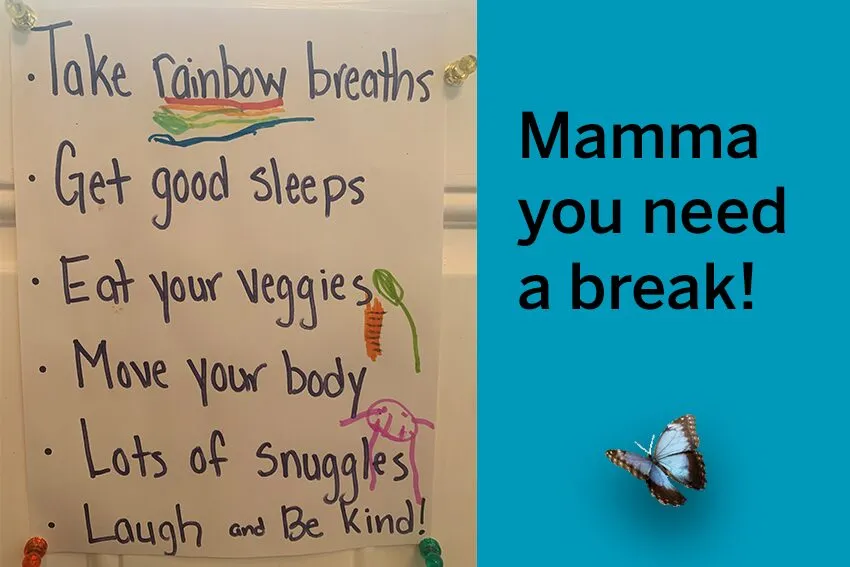Back from Burnout: 4 Tips for Renewing Your Passion


Psychology Today describes burnout as “a state of chronic stress that leads to physical and emotional exhaustion, cynicism, detachment, and feelings of ineffectiveness.”1 Even though most teachers would be horrified if they were ever described as cynical, detached, or ineffective, hundreds of surveys show that a majority of teachers report feeling physically and emotionally exhausted. So how did we get here?
Teaching has always been one of those careers that feels more like a calling than a job. So many of us identify as being a teacher rather than just working as a one. By nature, we are caregivers, often overachievers, and even occasionally perfectionists. While these traits are commonly ones of a highly effective teacher, they can also set us up for a very hard fall.
Now that the school year has come to a close, many teachers are finding themselves at a crossroads, asking themselves if they have the mental fortitude to return. I found myself in a similar place back in 2010. I was facing both personal and professional hardship: my daughter needed a series of operations with very long recovery times, while several children in my class were experiencing the results of intensely traumatic events. These are things even the most well-prepared teacher and mother can’t plan for. So, while giving all I had to the children in my life, my emotional and physical health began plummeting. Patches of hair began to fall out; I developed an ulcer and barely slept.
I know this sounds pretty dire. In reality, my body was sending me a lot of messages that I eventually had to heed if I was going to be the very best loving adult to the children that needed me. I made some immediate changes.
- I asked for help!
I couldn’t and shouldn’t have ever taken on the task of “fixing” every situation or solving every problem. I had to admit to myself that I didn’t have supernatural powers. I turned to my community and enlisted friends, colleagues, and family members to help. Help came in many forms. Most often, it came from a trusted confidant who would just listen, but other times it came from colleagues who could help in my class when I needed to focus on just one child who was having a particularly difficult day. Family happily helped with being with my daughter when I couldn’t, and my administrator brought in additional professionals to help the children and their families. - I sat with and acknowledged my strong emotions.
I spent so much time being brave and strong for others that I neglected to acknowledge my fears of not doing enough and my frustration that I was being asked to deal with too much at the same time. I began to write in a journal each night before bed about these emotions. The practice of writing them into a journal allowed me to process them enough that they weren’t stuck in my brain as I tried to sleep. - I looked for kindness and beauty.
Even during the hardest of times, or perhaps especially during the hardest of times, the simplest things can spark joy if you look for them. During my 40-minute commute home, I decided that I would consciously search for beauty in nature and kindness in the world around me. This could be as simple as seeing two people holding hands or a bird flying to a tree with a twig in its beak. From these little sparks, I could let my imagination flow into a story of a nest and a sweet friendship being built. The more I did it, the more I saw. This was incredibly calming to me and has become a practice that continues to soothe my most anxious and stressed moods. - Lastly, I focused on what I love about teaching.
If I really believed that teaching was a calling for me, then I needed to reconnect with what drew me to it in the first place. I went back to the journal and instead of writing about my strong, difficult feelings, I wrote about the things that brought me joy in teaching that day. It was a difficult shift to make, but little by little, it became easier to find the good.
Teaching has always been a complex and demanding job. For reasons I probably don’t even need to enumerate—because many of you have lived them—the events of the past couple of years have made it even more challenging. Each “issue” that arises seems to beget a half dozen more, and many of the support systems that teachers have traditionally relied on have eroded with time.
These four strategies helped me understand, process, and ultimately bounce back from the burnout I was feeling. They may not be the perfect solution for everyone, because everyone’s experiences and processes are unique. However, my hope is that my experience provides inspiration for all the educators who have found themselves in similar situations. Asking for help, acknowledging your feelings, and focusing on things that bring you joy (in your personal or professional life) can help you build a roadmap to a happy, healthier career.

Support the Teachers In Your Program
The Professional Development Teacher Membership combines personalized learning journeys with the power of a professional learning community of over 100,00 educators.
1Carter, Sherrie Bourg. “The Tell Tale Signs of Burnout … Do You Have Them?” Psychology Today, Sussex Publishers, 26 Nov. 2013, https://www.psychologytoday.com/us/blog/high-octane-women/201311/the-tell-tale-signs-burnout-do-you-have-them.


